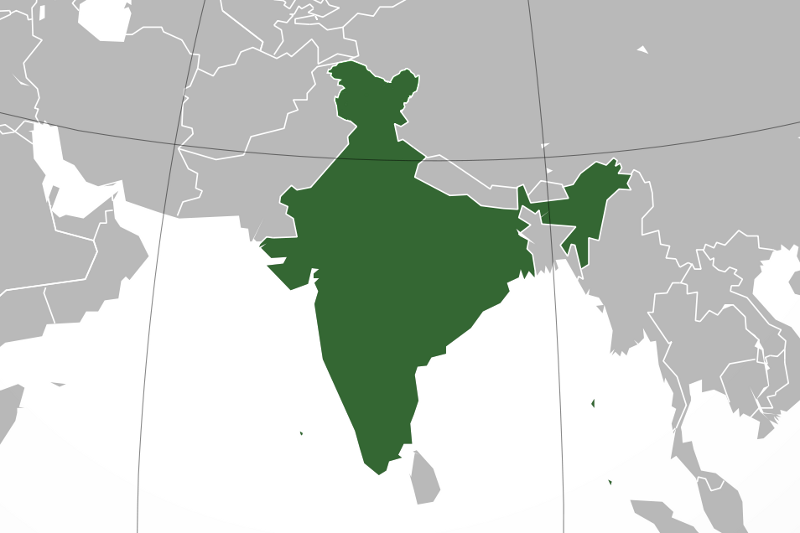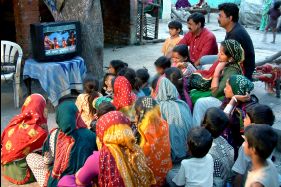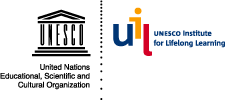Reading for a Billion: Same Language Subtitling
Country Profile: India
| Population | 1,210,193,422 (2011 census) |
|---|---|
| Poverty (population living on less than US$1.25 per day) | 42% (2005) |
| Official languages | Hindi and English |
| Total expenditure on education as % of GNP | 4.1 |
| Primary school net enrolment / attendance ratio (2005–2010) | 95% |
| Primary school completion rate | 90% |
| Total youth literacy rate (15 – 24 years, 2005 – 2010) |
|
| Adult literacy rate (15 years and over, 2005 – 2010) |
|
| Statistical sources |
Programme Overview
| Programme Title | Reading for a Billion: Same Language Subtitling |
|---|---|
| Implementing Organization | PlanetRead and IIM Ahmedabad |
| Language of Instruction | Hindi, Bengali, Gujarati, Punjabi, Tamil, Telugu, Kannada and Marathi |
| Funding | Short-term funding from Sir Ratan Tata Trust, Dell Giving, Development Marketplace (World Bank), Google Foundation, and Department of School Education and Literacy |
| Date of Inception | 1999 |
Context and Background

India has a very long and rich history. Nevertheless, there had been very little progress in the world of adult education until the middle of the twentieth century. It was only after independence from the British in 1947 that adult education instilled itself on a national level in India as a domain that was in need of collective help, restructuring, and positive change.
In the Census of 2001, the figures were rather encouraging with a literacy rate of 65 per cent, and with 95 per cent of the rural population within one kilometre of a primary school, granting almost every child access to his/her neighbouring school. This is a considerable accomplishment, but it is important to analyse this information critically. Does the fact that there is a primary school in the neighbourhood mean that the socioeconomic condition of children in India today allows them to go to that school? And if so, how many students are able to stay in school? These are questions that need to be addressed when speaking of literacy in India. The truth is that the census overestimates the literacy rate, since most people call themselves ‘literate’ as soon as they have completed one year of schooling or learned to write their name. In fact, the quality of education that students receive generally is poor and the drop-out rate under 12 years is up to 50 per cent in some areas.
In another study independently commissioned by PlanetRead and conducted by Nielson’s ORG-Centre for Social Research (with a sample of 23,000 individuals aged 7 and above, from five states) it showed that the literacy rate was at best 55 per cent with only 17 per cent being fully literate and 38 per cent ‘early-literate’ meaning those with beginning alphabetic knowledge but who could not read a simple paragraph or a news heading in the newspaper. Therefore, India can be estimated to have 146 million fully-literate, 327 million early-literate, and 387 million non-literate people. With these figures in mind, it is obvious that the subject of literacy in India is still of great importance and in need of evaluation and more progress.
Role of the media
In a country like India where there are over a billion people, the role of the mass media can be both a tool for motivation but also an approach to prompt effective literacy practices. Using song-based programmes to expose viewers to reading on a constant basis makes reading automatic and an enjoyable process. The biggest strength of this project is that it creates reading transactions on a mass scale at a fraction of the cost. In addition, song-based programmes provide an endless resource to build phonemic awareness.
The radio is another medium that can be used to creatively advance literacy. There could be a radio emission that reads the newspaper on the air while listeners follow along with the text. This is just one idea of how mass media can be used in a productive and efficient manner to improve the lives of citizens and create learning opportunities for a wide audience.
Reading for a Billion: Same Language Subtitling (SLS)

Same Language Subtitling (SLS) was originally created for the hearing impaired. It wasn’t until the late 1990s that SLS was combined with popular culture on TV to deliver reading practice in an easy and fun way. The idea is to subtitle music videos and songs from movies on television in the same language as the audio track so that the subtitles pass on the screen at the same time as the audio. Extensive feedback was gathered from 1996–1998, and it was clear that viewers liked the idea of reading along, mainly because it allowed them to sing along and learn the lyrics to their favourite songs. By 1999, SLS was put into practice, for the first time on Gujarat state TV, on a weekly half- hour programme of film songs. In 2002–2003 the SLS project got a grant from the Development Marketplace (World Bank), making it possible to extend SLS on ‘Chitrahaar’ and ‘Rangoli’ TV programmes, which broadcast Hindi film songs across the country.
Project Implementation: Approaches and Methods
The idea behind this project is to subtitle as many public access television channels in India in the same language as the audio so that viewers can read along with the soundtrack. In 2006, with support from the Google Foundation, SLS was implemented on ten TV channels with subtitles in ten different languages. This diversity allows people to benefit from reading in their mother tongues.
Target group
The SLS project targets the 300 million early-literate population in India with access to television. Early literates are a prime target because there is the fear that they will not put their skills to use and therefore, over time, lose them. SLS offers people the option to use their reading skills on a daily basis. The SLS programme benefits women in particular as they represent a large segment of the early literates. In addition, it is an extremely simple and economical approach to improving literacy skills among all age groups. Since 1999, the project has expanded and has SLS on ten weekly programmes on the national/state broadcaster.
Project Objective
The main goal of the SLS project is to transition early-literates to functional literates through lifelong reading practice and to raise the literacy rate, in general, in India. In a world where literacy is of growing importance, this project offers a simple and successful way to reach this goal by giving individuals better access to reading practice through film songs they enjoy. Bollywood songs are a major source of affordable entertainment in India and therefore are a main resource for the SLS project.
With India expected to be the most populous country by 2015, it is imperative that the people are educated and literate in order that they can play an active role in society and participate in the workforce.
Impact and Challenges
Based on several research studies, including independent studies, it can now be said that regular exposure to SLS:
more than halves the percentage of school-going children who remain non-literate even after five years of schooling
doubles the percentage of functional readers among school children halves the percentage of adults and children experiencing skills loss and substantially increases the percentage of people experiencing skills gain
leads to 25–30 per cent more people reading newspapers.
The passion for Bollywood songs and interest in learning the lyrics to these songs has motivated people to watch programmes where SLS is available. Being able to sing along to the songs has proved to be a very effective way to get people reading on a daily basis. SLS allows struggling readers to experience frequent moments of success in the course of their reading experience when they try to follow along with the songs.
While the funding needs of SLS are minimal, the programme has not succeeded in developing a steady source of financial support because the project has not yet made the transition from ‘project’ to ‘policy’. As a consequence, the project tends to have a prospect of not more than a year at a time.
Sustainability
PlanetRead’s sustainability strategy is to effect policy change in India so that SLS becomes mandatory on ALL song-based TV programming, in all languages, at least on the public service broadcaster. This will automatically require a fund allocation. In order to accellerate policy change and provide a context for a policy dialogue, PlanetRead aims to maintain SLS on ten weekly TV programmes in as many languages. PlanetRead has been in a dialogue with the Ministries of Information and Broadcasting and the Human Resource Development, to accept and scale up SLS in India on all song-based programming.
Since this project has been such a great success in India, PlanetRead plans to expand their work in other countries, especially in Africa, South Asia and Latin America, where music videos are popular and reading levels are low. It is a very cost-effective way to make reading fun and accessible and therefore shows promise in India and throughout the developing world.
Lessons Learned
The SLS project needs to win over the minds of policy makers and national agencies working for literacy in order to secure this programme as effective and beneficial to the viewers.
Although the impact on children and young adults is greater, weak-reading adults benefit from the SLS project as well. After five years, 12 per cent of adult viewers became good readers after exposure to SLS while only three per cent became good readers among those who did not watch SLS programmes.
Among early-literate adults, the age group that benefited the most from the project was 15–24-year-olds.
To promote literacy, one needs to create an environment for learning that is mindful to print exposure.
There is a need to improve print exposure in everyday life so that emergent skills are constantly challenged, used and cultivated.
With only one 30-minute programme per week, exposure to print is limited. Exposure to reading is best when done on a steady long-term basis, therefore this project would benefit immensely from more on-air programming.
Sources
President Clinton on SLS: http://www.youtube.com/watch?v=juZOlmf9APk
www.planetread.org
www.bookbox.com
CIA World Factbook https://www.cia.gov/library/publications/the-world-factbook/
Let a Billion Readers Bloom: Same Language Subtitling (SLS) on Television for Mass Literacy. International Review of Education, Vol. 54(5-6): 773-780, November 2008.
Reading Out of the “Idiot Box”: Same-Language Subtitling on Television in India. Information Technologies and International Development, Vol. 2, No. 1, 23-44, MIT Press, 2004.
Same Language Subtitling: A Butterfly for Literacy? International Journal of Lifelong Education, Vol. 21, No. 1, 55-66, 2002.
Shah: Rhiddi: Watch and learn : How music videos are triggering a literacy boom. In: Boston Globe
Contact
Dr. Brij Kothari
Founder Director, PlanetRead
1st Floor, Kamatchi Amman Koil Street
Puducherry-605001, India
E-mail: User: brij
Host: (at) planetread.org

